Trees Birds Mammals Fish Amphibians Reptiles
Wild Algarve
Bookshop
Agrocybe molesta (Lasch) Singer - Bearded Fieldcap
Phylum: Basidiomycota - Class: Agaricomycetes - Order: Agaricales - Family: Strophariaceae
Distribution - Taxonomic History - Etymology - Identification - Culinary Notes - Reference Sources
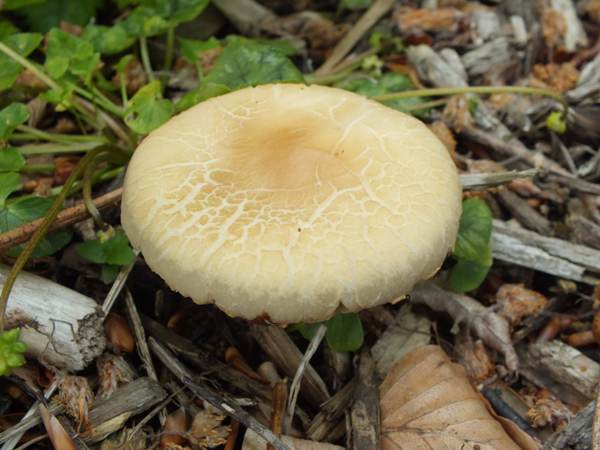
From late spring through summer these rather dull and undistinguished mushrooms emerge in grassland and sometimes on soil in gardens.
Distribution
The Bearded Fieldcap is an uncommon but far from rare find in Britain and Ireland. These fungi occur throughout Europe and are found also in parts of North America.
Agrocybe molesta is one of a complex group of fungi that are very difficult to separate in the field.
Note: In some field guides this mushroom is recorded in the family Bolbitiaceae.
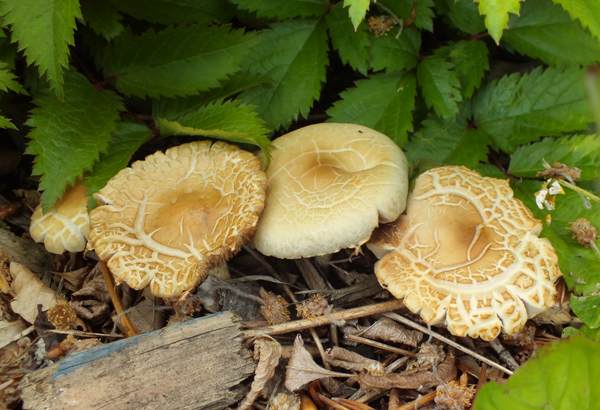
Taxonomic history
When German naturalist Wilhelm Gottfried Lasch (1787 - 1863) first described this mushroom in 1828 he named it Agaricus molestus. (Most of the gilled fungi were initially placed in a giant Agaricus genus, now redistributed to many other genera.) It was only as recently as 1978 that German-born American mycologist Rolf Singer reassigned this species to the genus Agrocybe, thus establishing its currently-accepted scientific name Agrocybe molesta.
Another similar fieldcap, Agrocybe dura, is found on mainland Europe, but experts consider it likely that the few collections from Britain and Ireland that were previously assigned this name were in fact Agrocybe molesta.
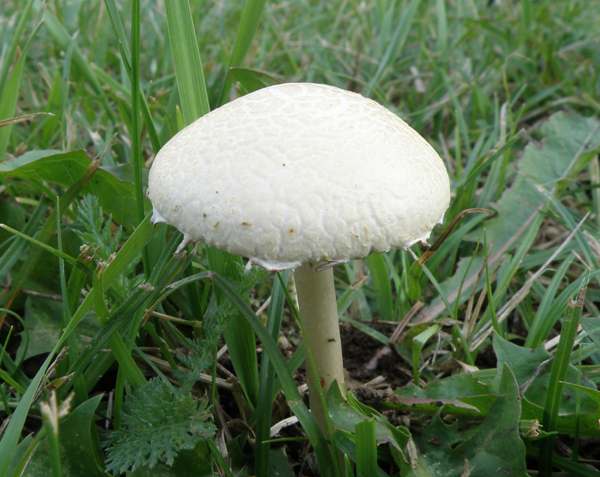
Synonyms of Agrocybe molesta include Agrocybe dura (in the sense used by Dennis, Orton & Hora and by many other British authors in the past), Agaricus molestus Lasch, Pholiota dura var. xanthophylla Bres., Agrocybe dura var. xanthophylla (Bres.) P.D. Orton, and Agrocybe molesta var. xanthophylla (Bres.) Bon & Courtec.
Etymology
'Fieldcap' is derived from Agro-, of fields, and -cybe, head or cap, and is therefore a direct translation of the generic name Agrocybe. The specific epithet molesta comes from Latin and means 'irksome' or 'troublesome'. Identifying these fieldcap mushrooms can indeed be quite irksome!
Identification guide
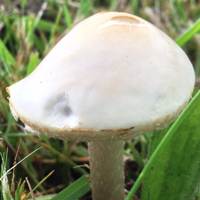 |
Cap
3 to 7cm in diameter; cream with a yellowish tinge;
convex and slightly greasy when young, expanding to almost flat with a
smooth surface that cracks when old. The cap margin often retains a hanging fringe of velar fragments - hence the common name 'Bearded' Fieldcap; the cap flesh is firm and almost white.
Stem
Almost white when young, becoming browner with age, the stem has a white
ring that discolours to brown as the spores mature and fall. The cylindrical stem
is 5 to 8cm tall and 3 to 7mm in diameter; its base is slightly swollen. The fibrous stem is firm and solid and has whitish or very pale buff flesh. |
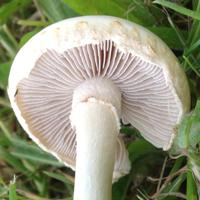 |
Gills
Adnate or adnexed, the gills are buff at
first becoming dirty clay brown as the spores mature.
|
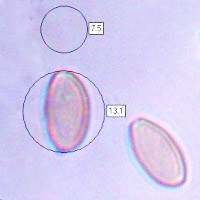 |
Spores
Ellipsoidal to ovoid, smooth, 12-14 x 6-8μm, somewhat truncated at one end, with a germ pore.
Spore print
Brown.
|
Odour/taste |
Slightly mealy odour; taste varies from mildly mealy to rather bitter. |
Habitat & Ecological role |
Scattered or in small tufts on grassy roadside verges and in meadows. |
Season |
May to August; occasionally in
September. |
Similar species |
Agrocybe praecox, which also occurs in
spring and summer, has a smooth darker cap that rarely cracks; it has smaller spores.
Agrocybe cylindracea grows on stumps of poplars and willows. |
Culinary Notes
Agrocybe molesta is considered by some authors to be edible if well cooked, but it is said by others to retain a bitter taste and is of very poor quality. Most field guides say that this group of fieldcap fungi is best avoided when gathering mushrooms to eat as they are easily confused with a number of seriously toxic toadstools.
Reference Sources
Fascinated by Fungi, 2nd Edition, Pat O'Reilly 2016, reprinted by Coch-y-bonddu Books in 2022.
Dennis, R.W.G., Orton, P.D., & Hora, F.B. (1960). New checklist of British agarics and boleti. Supplement to Transactions of the British Mycological Society.
Marcel Bon, 1980: Revision du Genre Agrocybe Fayod. Bulletin trimestriel de la Fédération Mycologique Dauphiné-Savoie, 76: 32-36. Bulletin de la Fédération trimestriel Mycologique Dauphiné-Savoie, 76: 32-36.
Henning Knudsen & Jan Vesterhout (2008). Funga Nordica. Copenhagen: Nordsvamp. p. 828.
BMS List of English Names for Fungi
Dictionary of the Fungi; Paul M. Kirk, Paul F. Cannon, David W. Minter and J. A. Stalpers; CABI, 2008
Taxonomic history and synonym information on these pages is drawn from many sources but in particular from the British Mycological Society's GB Checklist of Fungi.
Acknowledgement
This page includes pictures kindly contributed by Simon Harding.
Top of page...
Fascinated by Fungi. Back by popular demand, Pat O'Reilly's best-selling 450-page hardback book is available now. The latest second edition was republished with a sparkling new cover design in September 2022 by Coch-y-Bonddu Books. Full details and copies are available from the publisher's online bookshop...